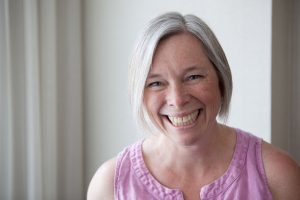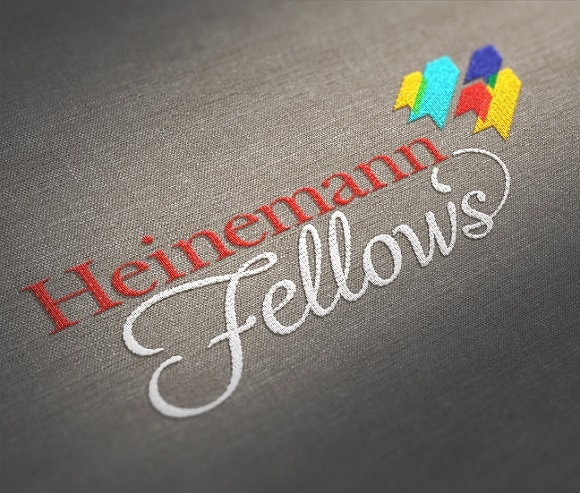As a principal, I take pride in the literacy workshops in our school—places where students are consistently invested in their learning and their work. When I step into a fourth grade classroom, it has that quiet hum of productive engagement. When I pull up a chair next to Clare, she tells me that she wants her narrative to have feeling in it, just like in The Other Side, by Jaqueline Woodson. The book is open on the table next to her draft covered in arrows, stars, and cross-outs. In a first grade classroom, I stand back and watch as Carlo finishes the book he is reading. He gets up and heads over to the classroom library, and after browsing a few different bins selects a book and plops right down in the bean bag in the library corner to embark on his next reading adventure. Children here see the literacy work they do in school connect seamlessly with the rich reading and writing they do outside of school–work that they do not as an assignment, but because they enjoy it.
I can’t help but think that if we treated math in the same way-- with a constructivist belief that children learn best by doing and by constructing their understanding-- our students would enjoy math more, and would, therefore, find greater success in math.
It is this niggling thought that started in the corner of my brain that has become a full-fledged obsession this year. It became my research question for my work as a Heinemann Fellow. The question I am really digging into and exploring through action research is this:
In what ways does pedagogy typically used in literacy instruction impact student agency and achievement when applied to math instruction in elementary school?
Having this kind of research question as a principal of an elementary school could take many possible pathways. It could mean doing a lot of reading, and then telling teachers to implement what I’ve read about. It could mean brainstorming and talking with teachers and then asking them to implement this idea that we co-created. Or it could mean getting into a classroom and doing action research with my teacher hat on. And so this question --this growing obsession about creating a school in which children are passionate, enthusiastic, life-long mathematicians who truly see value and joy in math--has led me out of the principal’s office and into the classroom. In particular, it has led me into a third grade classroom with a teacher (also named Katie) who was willing to partner with her principal to try out this idea. Katie is an incredibly thoughtful and reflective teacher, always looking for the next challenge in her teaching. She bravely answered the call from me for a partner in this work without hesitation.
Katie and I have made a commitment to working together on this question, truly as partners. We meet weekly to plan our math workshop for the upcoming week. We examine the standards, we consider our curricular resources, and we consider what we’ve observed in the children’s classroom work. We always start from the premise that our goal is to build in as many aspects that parallel our literacy workshops as possible. Specifically, we aim to include:
-
Mini-lessons that either explicitly teach a skill or allow students to explore a problem as a whole group,
-
Significant amounts of time for students to do the work of a mathematician-- problem solving, making choices about approaches, communicating with colleagues, and sharing solutions,
-
Small guided math groups to support students with specific needs,
-
Reflection on the learning at the end of the workshop.
Collaborative planning and co-teaching with Katie has brought my research question to life, and when research questions truly come to life, there are never simple answers. Our work together has led to new questions. For example, what does choice even look like in a math workshop? While these questions sometimes feel daunting (and maybe, at times, frustrating), we come back together each week, more often re-energized in the conversation and planning process.
As this year unfolds, I will be reflecting and writing more about the various elements we are trying out in this workshop. The element of choice--a cornerstone of the literacy workshop--is critical in math, but it also looks different from choice in literacy. As Katie and I work together, I’ll be sharing my thoughts about what we have tried, what it looks like in a real classroom, and any roadblocks we encounter along the way. I imagine there will also be more to say about working with small groups in math, as well as conferring in math (vs. fixing, helping, or rescuing), but time will tell. I am looking forward to sharing this work with you, and hearing from you about your own experiences in working to make math a place of joyful, enthusiastic engagement for all of our young learners.
 Katie Charner-Laird has been the principal at the Cambridgeport School in Cambridge, Massachusetts for the past six years. She views her role as an instructional leader, spending large amounts of time in the classroom because, as she says, “there is no perfect lesson. There is only a lesson that perfectly matches the needs of the students.” Over the past two years, Katie has worked to create an approach for teacher’s to be in one another’s classrooms, engaging in what her school calls “collaborative observation.” Teachers observe and collaborate to determine which specific instructional moves work for which specific students. Katie believes that when all of the adults in a school take the stance of a learner, “we create a vibrant learning environment for our students.”
Katie Charner-Laird has been the principal at the Cambridgeport School in Cambridge, Massachusetts for the past six years. She views her role as an instructional leader, spending large amounts of time in the classroom because, as she says, “there is no perfect lesson. There is only a lesson that perfectly matches the needs of the students.” Over the past two years, Katie has worked to create an approach for teacher’s to be in one another’s classrooms, engaging in what her school calls “collaborative observation.” Teachers observe and collaborate to determine which specific instructional moves work for which specific students. Katie believes that when all of the adults in a school take the stance of a learner, “we create a vibrant learning environment for our students.”



